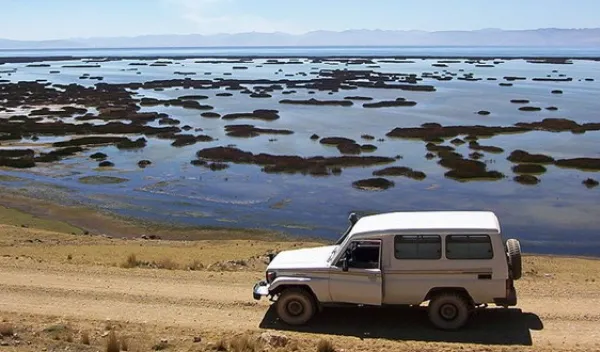
Researchers pull record of 700,000 years of tropical climate change from an Andean lakebed
When Mark Abbott and his team pulled a 300-foot-long core of mud from a lakebed high in the Peruvian Andes, he hoped it might provide a glimpse of the past 160,000 years of climate change.
Instead, the U.S. National Science Foundation-supported researchers revealed in the journal Nature that the lakebed had recorded the ebb and flow of glaciers for more than 700,000 years — the longest glacier record for the tropics, and among the longest records of historical climate. In that lake mud, the team found clues for how climate change may shape the modern-day world.
"This is unlike anything we had before," said Abbott, a geologist and environmental scientist at the University of Pittsburgh. "We now have a land-based record of glaciation from the tropics that is in many ways equal to our records from the ice caps at the poles and from the ocean, and that's really been lacking."
Researchers have known for decades that Lake Junin is a rare gem. Situated more than 13,000 feet above sea level in the Andes, the lake meets all the right conditions to archive the shifting glacial epochs. It's close enough to glaciers that it catches sediment and water that flows down the mountains, but distant enough not to have been overrun by glaciers itself since it formed.
Having avoided disruption by millennia of churning ice, the lake's sediments remain stacked in order by the year they were laid down, like the pages of a history book. Accessing that recorded history, however, took researchers more than 20 years.
"It's remote, high and hard to get to," said Abbott. "There are no boats on the lake, and it's ringed by marshes — it's a very difficult site to work on with heavy equipment, so it was a huge effort to pull this together."
The team included researchers from Union College, the University of Florida and other academic institutions.
With a long, detailed record of climate change in the tropics, the team was able to compare the history of global climate change in a way that previously wasn't possible. The glacier history contained in the lake core matched up with those found elsewhere, showing a roughly 100,000-year cycle in amounts of ice across the globe. But it also revealed some curiosities.
Comparing the 700,000 years of climate change from Lake Junin with those found elsewhere in the world revealed patterns that may serve as clues for what to expect as the world heats up in the 21st century. "When the Arctic warmed, the southern tropics dried out dramatically,” Abbott said. “You shift heat into the Southern Hemisphere, and the monsoon weakens, effectively, so you get very dry conditions."
That's especially noteworthy because of how many people rely on the predictability of monsoons for growing crops. And it's one more piece of evidence for an idea that's familiar to anyone who studies the planet's climate.
"The global climate is very connected," he said. "If you change something anywhere on the globe, you see its effects virtually everywhere."
Added Jonathan Wynn, a program director in NSF's Division of Earth Sciences, "The remarkable synchronicity between tropical Lake Junin and high-latitude glacial records will be further investigated by NSF-funded work. Lake Junin will have more to say on the connections between tropical Andean regional climate and the global climate system."
